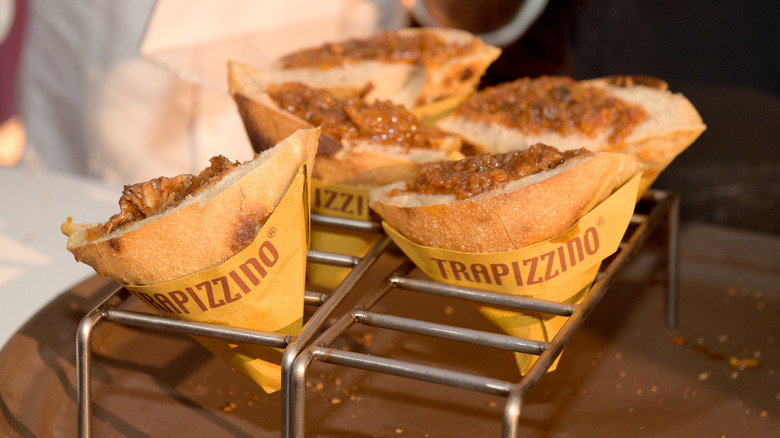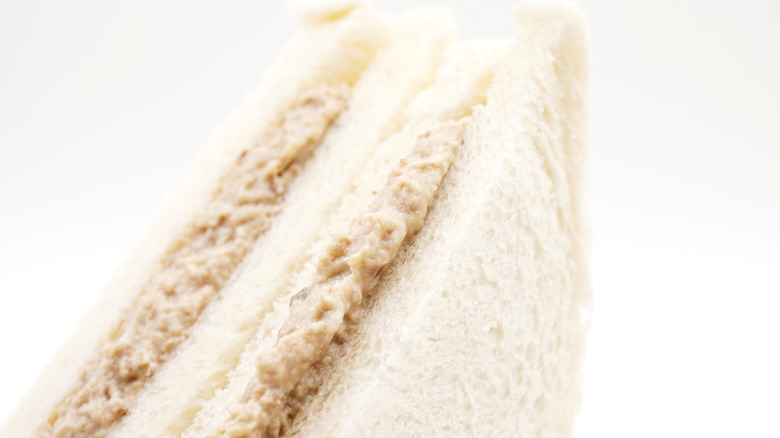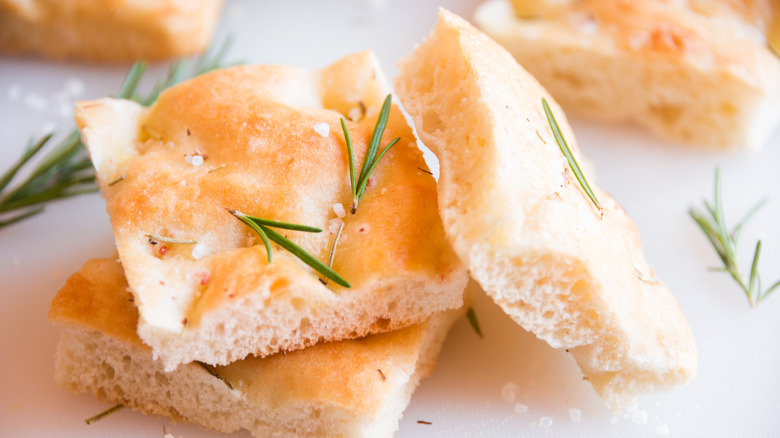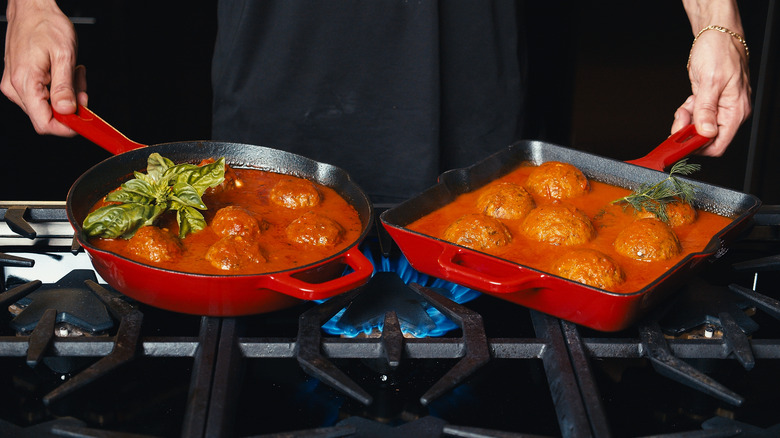Trapizzino: A Decadent Roman Combination Of A Sandwich And Pizza
Italian chef Stefano Callegari is the mastermind behind the trapizzino, an Italian street food that's a mashup of a sandwich and pizza. At his New York City-based restaurant Trapizzino, Callegari delivers a fresh take on traditional Roman foods. After combining the triangular shape of Italy's tramezzino sandwich with a Roman-style bianca pizza, Callegari slices the creation open and stuffs it with all sorts of Italian delicacies.
Callegari told Katie Parla that he wanted to create a sandwich filled with traditional Roman foods, but needed a bread that would hold the saucy ingredients. Callegari explains younger generations view traditional Roman foods as "exotic," and he wanted to re-introduce many of these items back into the culinary lexicon. The trapizzino was a natural evolution for the pizza Callegari was making at his first pizzeria Sforno; here, he innovated a cacio e pepe pizza by using ice cubes to make the dough wet enough for cheese and pepper to stick (via Katie Parla). For the trapizzino, the ah-ha moment came via pizza dough — specifically the edges — and Callegari cut them open to form pockets that could hold heavier toppings.
History of the tramezzino sandwich
Traditionally, a tramezzino sandwich is made from two slices of crustless white bread that have been filled with mayo and meats like tuna or prosciutto and then sliced into triangles for serving (per Taste Atlas). Italy Magazine explains that in 1926, two Turin café owners came up with the idea of crafting sandwiches using simple white bread as a base to enhance more glamorous fillings, resulting in a quick but delicious meal served to hungry workers during lunch breaks. The sandwiches were christened with their name tramezzino by the poet Gabriele D'Annunzio; the triangle shape reminded him of the partition walls, called tramezze, in his home.
The Chicago Tribune says these sandwiches are found everywhere in Italy, from cafes to train stations. Naturally Epicurean considers the sandwich a must-try Venetian food. Mostly eaten as a mid-morning snack, these lite bites offer quick sustenance for Italians on the go. This explains Delighted Cooking's translation of the word as a "snack in between"; the website calls the carefully constructed sandwiches "elegant."
What makes pizza bianca unique?
While Americans think of pizza bianca as a white pizza without red sauce, the Roman pizza bianca is akin to focaccia bread, the spongy dough baked and topped with olive oil and salt (per Devour Tours). However, Serious Eats explains that there are subtle but important differences. Focaccia dough uses oil, while pizza bianca is considered a lean dough, which means no fat. This gives the pizza more chew. A high-hydration dough, a lot of water is required for pizza bianca dough — 80% of the amount of flour used. This creates more steam when cooking, forming a strong but stretchy gluten, which helps build an airy bread. This is important as the dough needs a bit of puff for it to be sliced into pockets for sandwich stuffings.
In place of yeast, Chef Stefano Callegari uses a special 200-year-old sourdough recipe for his Trapizzino-specific bread, which takes 30 hours to make (via La Cucina Italiana). Sonoma chef Mark Hopper explains to Medium's Food Republic that using a sourdough starter in place of traditional yeast yields a more digestible crust. Miss Vickie echoes the sentiment, praising sourdough crusts for their tangy taste and crispiness.
Served with traditional Roman foods
Trapizzino's special sourdough gets stuffed with traditional Roman food. It's a handheld meal with stuffing similar to dishes you would eat at a sit-down restaurant. However, by stuffing it into the dough, Stefano Callegari has made a takeaway option for folks on the go. The menu for Trapizzino's New York outpost features sandwiches stuffed with Italian delicacies like a nine-hour braised oxtail and greens and garlic or more familiar items like classic Italian meatballs, eggplant, and chicken.
For his restaurant in Italy, Callegari's menu is more ambitious. One stuffing features tripe made in the Roman style, which is described by Local Aromas as tripe simmered in tomato sauce and topped with pecorino Romano cheese and wild mint. There is also a sandwich stuffed with boiled tongue smothered in a green sauce. The blog Rachel Eats explains that the salsa verde used is typically made from parsley, capers, anchovies, breadcrumbs, garlic, and oil.
While the trapizzino might not be classified as either a sandwich or a pizza, this unique take on street food sure sounds delicious.



